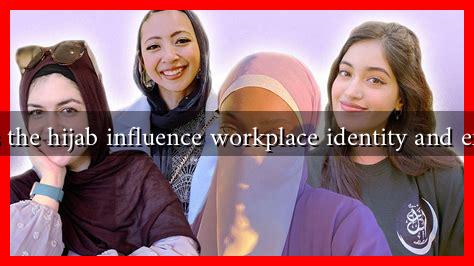-
Table of Contents
How Does the Hijab Influence Workplace Identity and Expression?
The hijab, a traditional headscarf worn by many Muslim women, is more than just a piece of clothing; it is a symbol of faith, identity, and cultural expression. In the workplace, the hijab can significantly influence how individuals perceive themselves and how they are perceived by others. This article explores the multifaceted impact of the hijab on workplace identity and expression, drawing on research, case studies, and personal narratives.
The Hijab as a Symbol of Identity
For many Muslim women, wearing the hijab is an essential aspect of their identity. It represents their commitment to their faith and cultural heritage. In the workplace, this can manifest in various ways:
- Personal Empowerment: Many women report feeling empowered by wearing the hijab, as it allows them to express their beliefs openly. This empowerment can lead to increased confidence in professional settings.
- Cultural Representation: The hijab serves as a visible marker of cultural identity, allowing women to represent their heritage in diverse workplaces.
- Community Connection: Wearing the hijab can foster a sense of belonging among Muslim women, creating a supportive network within the workplace.
Challenges Faced by Hijab-Wearing Women
Despite the positive aspects of wearing the hijab, many women encounter challenges in the workplace. These challenges can affect their professional identity and expression:
- Discrimination: Studies have shown that hijab-wearing women often face discrimination during hiring processes. A 2016 study published in the journal “Social Psychology” found that employers were less likely to hire women who wore hijabs compared to those who did not.
- Microaggressions: Hijab-wearing women may experience microaggressions, such as unsolicited questions about their attire or assumptions about their capabilities based on their appearance.
- Pressure to Conform: In some workplaces, there may be an unspoken pressure to conform to Western standards of appearance, which can lead to internal conflict for hijab-wearing women.
Case Studies: Navigating Workplace Dynamics
Several case studies illustrate the complex dynamics hijab-wearing women face in the workplace. For instance, a study conducted by the Institute for Social Policy and Understanding (ISPU) found that Muslim women who wear the hijab often feel the need to work harder to prove their competence. One participant noted:
“I feel like I have to go above and beyond to show that I am just as capable as my colleagues who don’t wear the hijab.”
This sentiment is echoed in various industries, from corporate settings to creative fields. In a 2020 report by the American Psychological Association, it was highlighted that hijab-wearing women often engage in “identity negotiation,” balancing their professional roles with their cultural and religious identities.
Positive Workplace Initiatives
To create a more inclusive environment for hijab-wearing women, many organizations are implementing positive initiatives:
- Diversity Training: Companies are increasingly recognizing the importance of diversity training to educate employees about cultural differences and promote understanding.
- Inclusive Dress Codes: Some organizations are revising their dress codes to be more inclusive, allowing employees to express their cultural identities without fear of repercussion.
- Support Networks: Establishing support networks for Muslim employees can foster a sense of community and provide resources for navigating workplace challenges.
Conclusion: Embracing Diversity in the Workplace
The hijab is a powerful symbol of identity and expression for many Muslim women. While it can empower individuals and foster a sense of community, it also presents challenges that can impact workplace dynamics. By understanding these complexities and implementing inclusive practices, organizations can create environments where all employees feel valued and respected. Embracing diversity not only enhances workplace culture but also drives innovation and success.
In summary, the hijab influences workplace identity and expression in profound ways, shaping how individuals navigate their professional lives. As society continues to evolve, it is crucial to recognize and celebrate the diverse identities that contribute to the richness of the workplace.
For further reading on the impact of cultural attire in professional settings, you can explore resources from the Institute for Social Policy and Understanding.

